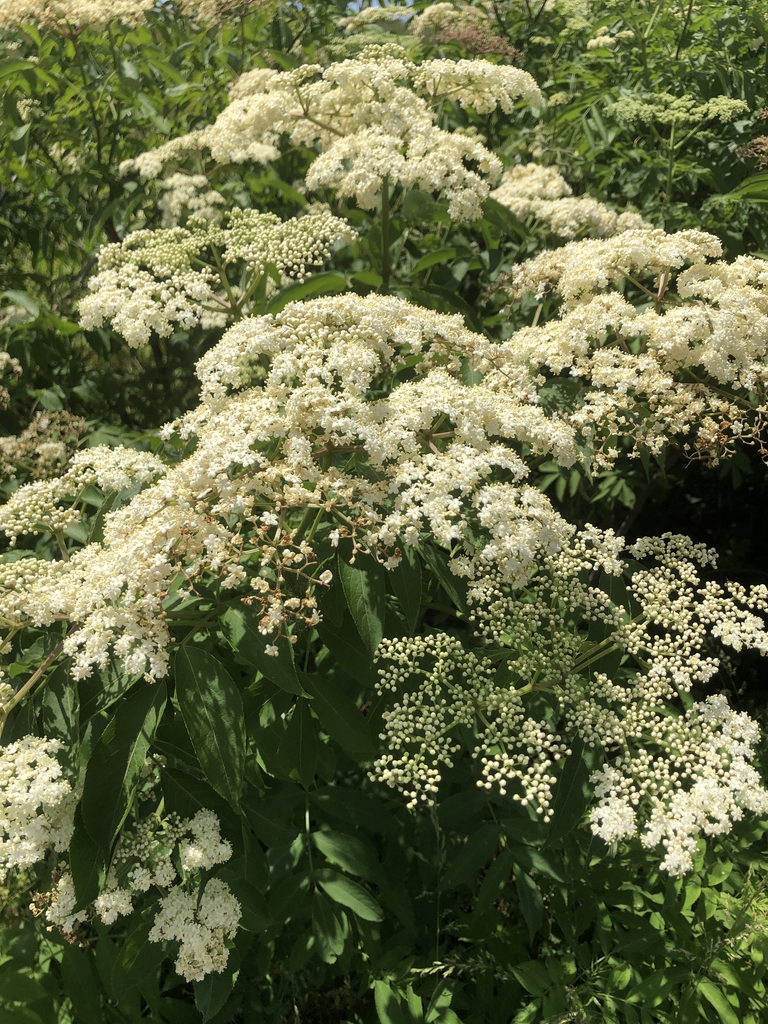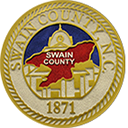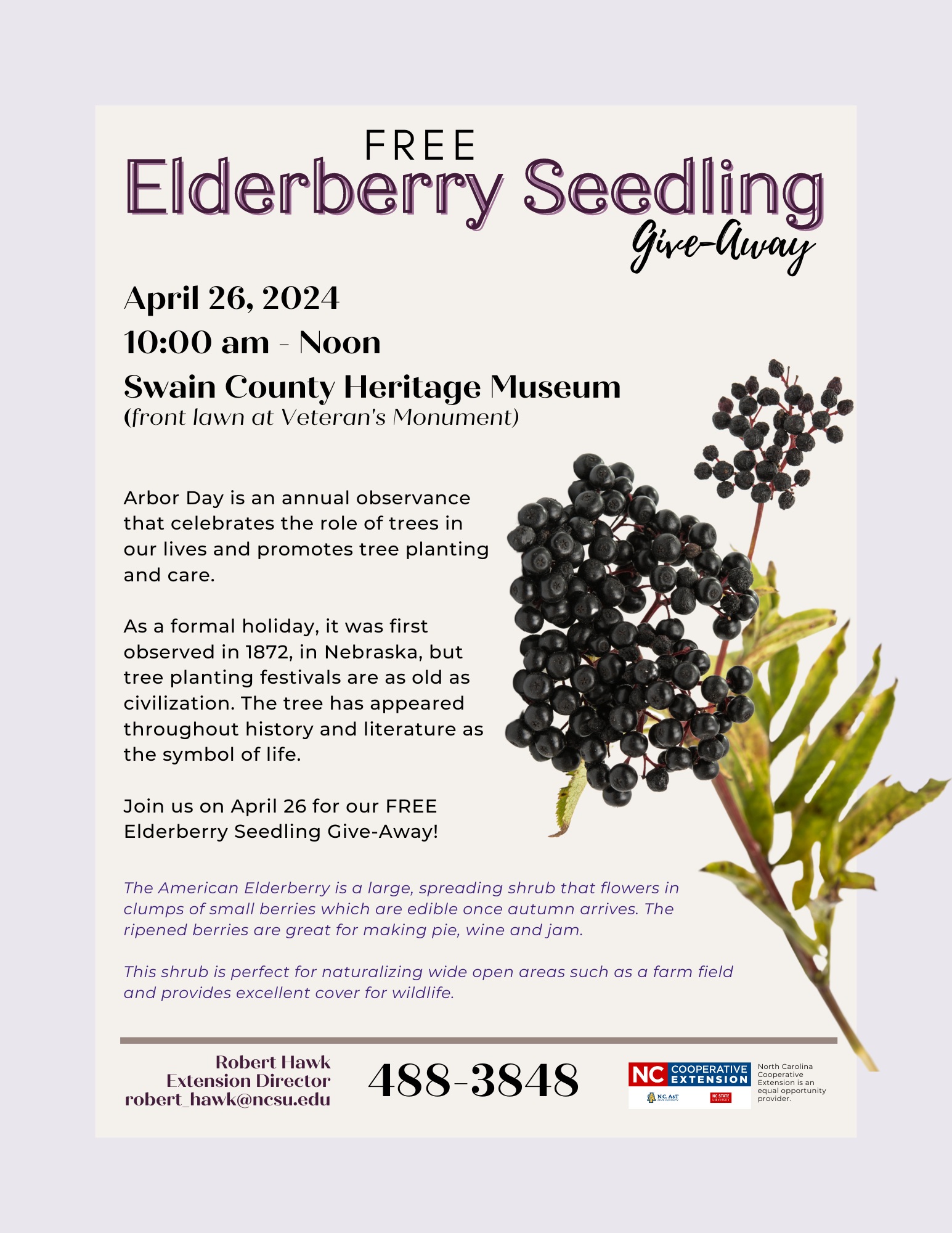2024 Arbor Day – Get Your Free Elderberry Seedling on April 26th!
go.ncsu.edu/readext?996162
en Español / em Português
El inglés es el idioma de control de esta página. En la medida en que haya algún conflicto entre la traducción al inglés y la traducción, el inglés prevalece.
Al hacer clic en el enlace de traducción se activa un servicio de traducción gratuito para convertir la página al español. Al igual que con cualquier traducción por Internet, la conversión no es sensible al contexto y puede que no traduzca el texto en su significado original. NC State Extension no garantiza la exactitud del texto traducido. Por favor, tenga en cuenta que algunas aplicaciones y/o servicios pueden no funcionar como se espera cuando se traducen.
Português
Inglês é o idioma de controle desta página. Na medida que haja algum conflito entre o texto original em Inglês e a tradução, o Inglês prevalece.
Ao clicar no link de tradução, um serviço gratuito de tradução será ativado para converter a página para o Português. Como em qualquer tradução pela internet, a conversão não é sensivel ao contexto e pode não ocorrer a tradução para o significado orginal. O serviço de Extensão da Carolina do Norte (NC State Extension) não garante a exatidão do texto traduzido. Por favor, observe que algumas funções ou serviços podem não funcionar como esperado após a tradução.
English
English is the controlling language of this page. To the extent there is any conflict between the English text and the translation, English controls.
Clicking on the translation link activates a free translation service to convert the page to Spanish. As with any Internet translation, the conversion is not context-sensitive and may not translate the text to its original meaning. NC State Extension does not guarantee the accuracy of the translated text. Please note that some applications and/or services may not function as expected when translated.
Collapse ▲Nationally, Arbor Day is celebrated on the last Friday of April. However, most states observe a separate Arbor Day on a date of their choosing in accordance with the best tree-planting times. In North Carolina, we celebrate Arbor Day on the first Friday following March 15. This year, NC Arbor Day falls on Friday, March 22. Arbor Day is all about giving thanks for/to your trees.
 Planting trees and shrubs is one of the best and most powerful ways we can make a positive difference in the environment. It’s not rocket science, more like match making with plants. It’s actually pretty easy with the resources offered by NCSU and you don’t need a horticulture degree to make a match made in heaven. Especially with the Elderberry shrub. It’s got it all – Beauty, food, health benefits, ecology benefits, and more.
Planting trees and shrubs is one of the best and most powerful ways we can make a positive difference in the environment. It’s not rocket science, more like match making with plants. It’s actually pretty easy with the resources offered by NCSU and you don’t need a horticulture degree to make a match made in heaven. Especially with the Elderberry shrub. It’s got it all – Beauty, food, health benefits, ecology benefits, and more.
The American elderberry is a woody, deciduous shrub or small tree, 5 to 12 feet tall and 6 to 10 feet wide, that is native to North America, Venezuela, and Brazil. It can be found in all areas of NC along streams, marshes, moist forests, and disturbed areas. Read more about what it needs to be happy here.
Even non-plant folks benefit from being around those of us who just can’t get enough of the flora. Plants fight climate change through photosynthesis, absorbing harmful carbon dioxide, removing and storing the carbon and releasing oxygen back into the air. In one year, an acre of mature trees absorbs the amount of CO2 produced by a car driven 26,000 miles! Trees and shrubs clean the air and help you breathe by this process as well as by absorbing odors and pollutants like nitrogen oxides, ammonia, sulfur dioxide and ozone. It’s estimated that one tree can absorb nearly 10 pounds of polluted air each year and release 260 pounds of oxygen.
Torrential rains can result in water runoff into streams, lakes and wetlands, creating the potential for flooding. It also picks up and carries pollutants along the way. The EPA and the Center for Watershed Protection are recognizing the importance of trees in managing runoff. Leaf canopies help buffer the falling rain and their roots hold the soil in place, encouraging the water to seep into the ground rather than run off.
Trees and shrubs provide passive energy conservation in summer and winter, providing shade from the hot summer sun and shelter from cold winter winds. Trees in an attractive landscape setting increase a home’s value by up to 15 percent while providing nesting sites, food and shelter for birds and other wildlife while reducing stress and anxiety for us.
Why plant an elderberry? Because of their high vitamin and anti-oxidant content (they contain more vitamin C than oranges!) make them a healthy and beautiful addition to your edible landscape. Elderberry has historically been used to treat respiratory ailments and both the flowers and the berries are edible.
Beware snacking right from the bush – the raw berries are astringent and inedible, but after cooking they become sweet and earthy tasting. The birds however will have no such restrictions and unless you net your bushes in fruit you will be sharing with our feathered friends. Maybe they’ll leave you some this fall, but don’t count on it as they love this treat.
Plants should be about ten feet apart and the berries should appear in the second year after planting. They need well-drained soil and absolutely will not grow in poorly drained areas. They do well in raised beds. The roots are shallow so cultivation for weed control should be kept at a minimum and a light mulch will help conserve moisture and moderate temperature extremes in the root zones. Happy roots, happy shoots.
Get Your FREE Elderberry Seedlings on April 26th!
Swain County Heritage Museum (front lawn)
Bryson City
10:00 – Noon
OR
Mark Watson Park in Constitution Square
Sylva
2:00 p.m. – 4:00 p.m..
We’ll have free Elderberry seedlings to share while they last.





